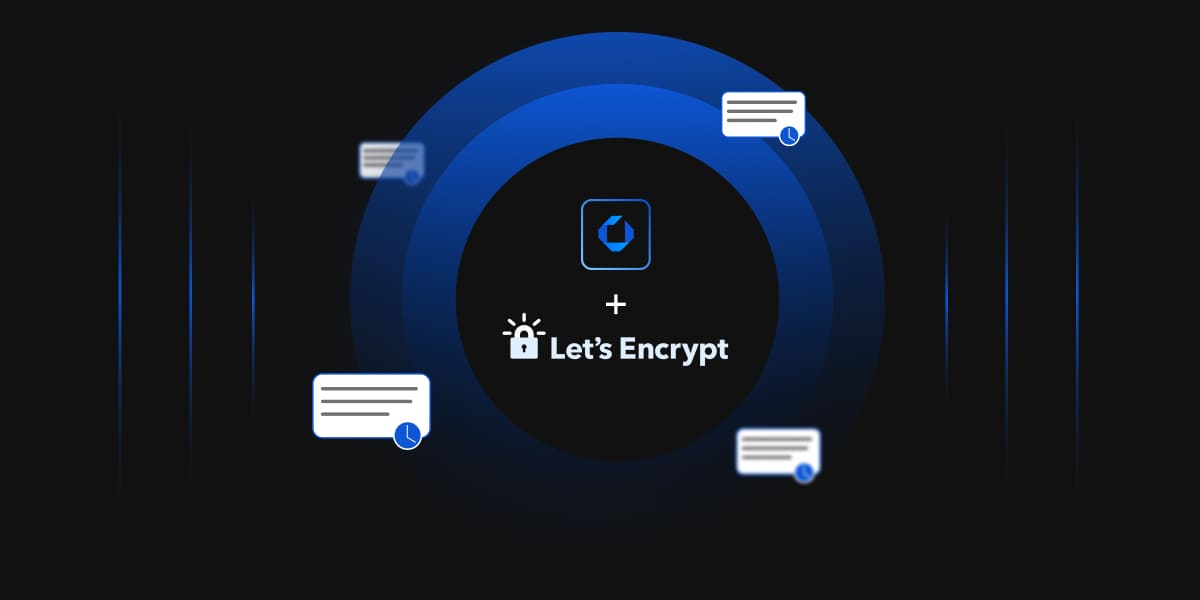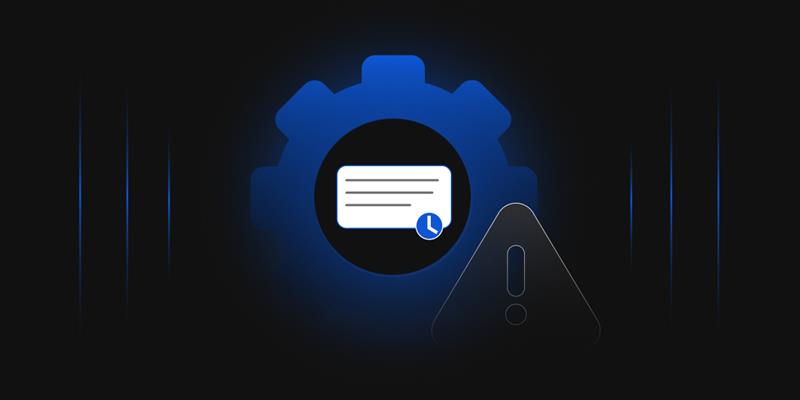APIs are like the invisible glue that holds up seamless digital experiences, from booking appointments to making payments to using third-party services. Organizations have been rapidly moving towards API-driven architecture to accelerate innovation and improve customer experience; however, the growing security challenges are turning them back. Over 70% of web traffic now constitutes API calls, and rising API attacks like DDoS, BOLA, etc, make the incorporation of API security imperative.
The proliferation of APIs within cloud environments and microservices architectures makes security traditionally ineffective against sophisticated threats targeting these complex communication channels. This blog discusses how Public Key Infrastructure (PKI) and Certificate Lifecycle Management (CLM) set the foundation for creating solid API security through robust authentication, encryption, and ensuring integrity while addressing the challenges of building and maintaining API security at scale during the ever-changing, dynamic nature of today’s digital ecosystem.
Real World API attacks
The whole point about modern API security issues and risks is to consider real instances when insufficient API protection led to massive data breaches and privacy violations. These examples from giants such as Facebook, Dell, Twitter, etc, depict the different ways in which ignored API vulnerabilities have been exploited by attackers, leading to grave consequences for the users and the organizations.
Facebook- Access Token Leak (2018)
Facebook went through a huge security incident in 2018 that compromised approximately 50 million accounts. The incident stemmed from a bug in the “View As” feature that interacted strangely with the video uploader API. The attackers could retrieve user access tokens, essentially digital keys that allowed full access to victim accounts. With these tokens, hackers could hijack user accounts without requiring passwords, which immediately raised serious questions about the platform’s security and the users’ privacy.
DeepSeek AI Platform Exposure (2025)
When researchers from cloud security company Wiz found an unprotected database online in January 2025, the Chinese AI startup DeepSeek suffered a serious security breach. User chat histories, API authentication tokens, system logs, backend information, and other sensitive operational metadata were among this database’s more than a million records. Potential attackers could completely control database operations because the exposed database was openly accessible without authentication.
T-Mobile – Exposure of APIs (2023)
At the start of 2023, T-Mobile announced a breach that affected nearly 37 million customers. An API was revealed to expose sensitive customer data with no authentication. It thus enabled unauthorized access to personal data such as full names, phone numbers, billing addresses, account details, and plan information. The incident indicates the increasing inadequacy of security measures to ensure that APIs cannot be accessed without authorization.
Twitter – API Misusing (2021–2022)
From 2021 to 2022, attackers could map email addresses and telephone numbers to Twitter accounts using one of Twitter’s APIs. Although the API did not directly leak such information for mass scraping, eventually, such user data was gathered and sold across underground forums for over 5.4 million accounts. This sort of attack — abusing account enumeration vulnerabilities — shows that even “non-sensitive” API features can turn into weapons when they’re not properly secured.
Dell Technologies Breach (2024)
A breach occurred whereby unauthorized personnel gained access to sensitive customer information via a vulnerability in the client portal managed by a reseller. The attackers sent nearly 50 million attempts, at a speed of over 5,000 requests to log in every minute, over almost three weeks, bringing attention to the importance of continuous monitoring and vulnerability assessment.
Types of API attacks
Numerous security risks that affect APIs have the potential to cause data breaches and interruptions in service. The main categories of API attacks are described in this section, along with how PKI helps prevent them by using secure encryption and authentication.
Injection Attacks:
Injection attacks involve the insertion of malicious code or commands into API requests. When the system processes these requests, it performs unauthorized operations. SQL injection is particularly dangerous, causing database manipulation in the form of being able to access, modify, or delete sensitive data. These attacks are possible when the input validation is either weak or absent, eventually leading to a complete system compromise or data theft or, at worst, administrative access by unauthorized personnel.
Denial of Service or Distributed Denial of Service (DoS/DDoS) Attacks:
Such attacks stop legitimate users from accessing their services wherever possible by bombarding API endpoints with huge requests. To launch this kind of assault, these attacks employ a flood of requests from numerous compromised devices (called botnets) to create high amounts of traffic from various sources. This makes them particularly difficult to mitigate. Affected areas include a service disruption followed by the loss of revenue; besides these, there are adverse effects related to reputation and customer losses, with the financial sector and e-commerce being the most likely targets.
Authentication Hijacking:
In such attacks, criminals steal or forge the authentication token to impersonate an authentic user and avoid security safeguards. Once inside, they can escalate privileges, access sensitive data, or deploy malware while appearing to be an authorized user. The most common methods of token theft are cross-site scripting, insecure token storage, or network interception, which make it difficult to detect significant damage until it has occurred.
Man-in-the-Middle (MitM):
These attacks intercept communications between API endpoints, allowing attackers to eavesdrop, steal credentials, or alter data in transit. The absence of proper encryption and certificate validation makes it easy for attackers to place themselves between clients and servers to capture private information or inject malicious content. Particularly dangerous for financial transactions, login sessions, and data transfers involving personal information.
Broken Object Level Authorization (BOLA):
A BOLA attack is one wherein an attacker bypasses authorization by modifying API endpoints referencing objects such as accounts, files, or data records simply through changes in an identifier within an API request. For instance, if a user can view their account data at /api/v1/user/12345, an attacker will attempt to change it to /api/v1/user/12346 to obtain another user’s information. That attack is successfully executed when the API does not ascertain that the user making the request has the correct authorization to view that particular resource.
How to Stay Secure?
Employing strong security measures for any API entails multi-layers and a comprehensive defense approach. Organizations should implement strong authentication through OAuth 2.0 and API keys, with authorization mechanisms focused on granularity at both endpoint and object levels. Input validation and output encoding help mitigate injection attacks, rate limiting, and traffic monitoring defend against DDoS assaults. Data being shared should be encrypted with TLS 1.3, and security testing should be performed regularly using tools for automated scanning and conducting penetration tests. API gateways allow for the enforcement and monitoring of policies at scale in a centralized fashion. Not only does logging provide this capability, but it also allows organizations to detect threats and support forensic analysis.
PKI and API Security
In today’s API-centric digital environments, PKI remains the linchpin of trust to ensure robust API security and the implementation of authentication methods. PKI, consisting of digital certificates and public-private key pairs, strengthens mTLS authentication by allowing only authorized machines, workloads, and applications to use and access APIs. Thus, it prevents access attempts through verification and reduces the possibility of being subjected to credential theft, account takeovers, and BOLA attacks that have affected many API implementations.
PKI provides encrypted channels via TLS/HTTPS to prevent attacks such as eavesdropping and MitM attacks against sensitive data in transit. Such protections are now crucial as API-targeted attacks continue to rise rapidly, with attackers increasingly focusing on exploiting vulnerabilities in exposed and poorly secured application interfaces. Furthermore, digital signatures and certificates ensure the integrity of messages and the cryptographic derivation of the sender.
How Can Encryption Consulting Help?
CertSecure Manager is an all-around solution for CLM automation engineered by us, which also addresses the case of managing API certificates. In the context of API security, managing TLS/SSL certificates is crucial to ensure encrypted communication, authenticate endpoints, and maintain trust.
CertSecure Manager Key Features: Beneficial for API Security
Automated Certificate Lifecycle Management: That is, this software automates the issuance, deployment, renewal, and revocation of certificates, reducing the risk of human error while keeping API endpoints secure without any manual intervention.
Central Policy Enforcement: CertSecure Manager ensures that all certificates, including certificates for API usage, have consistent security standards through centralized certificate policies. Centralization helps ensure compliance with industry regulations and in-house security policies.
Integration with Existing Infrastructure: CertSecure Manager integrates easily with any environment, including cloud platforms, on-premises systems, and Kubernetes clusters, to ensure that API certificates across infrastructures are effectively managed.
Comprehensive Certificate discovery: The solution offers solid discovery capabilities that scan the network to identify every certificate issued and deployed, including those related to APIs. Certificate discovery further helps to identify unauthorized or rogue certificates, which can compromise API security.
Thus, CertSecure Manager is a top-notch solution to ensure API certificate management and enhance API security within your organization’s environment. To learn more or to book a demo, visit CertSecure Manager.
Conclusion
High-profile breaches at Facebook, DeepSeek, and Twitter highlight security threats in an API-driven digital industry, underscoring the critical need for protecting APIs. PKI addresses this security need and provides strong authentication, encryption, and data integrity verification. However, an effective implementation of PKI requires automated CLM because of the complexity and scale associated with modern API ecosystems. Organizations must implement PKI and CLM automation solutions to safeguard API infrastructures against ever-changing threats while remaining agile and integrative to sustain innovation and enrich customer experiences in the interconnected world.




